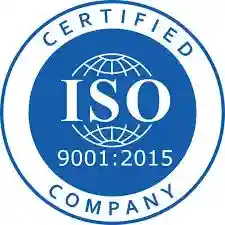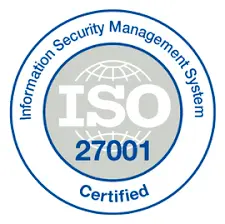How L & D Leaders Can Help in Retaining Top Talent by Cultivating a Growth Mindset

Finding good talent is hard. Retaining them is harder in this competitive and difficult labor market. Many organizations are grappling with the skills gap as technology changes and market dynamics change the way we work. Retaining and strengthening the workforce is becoming a complex task and L&D leaders now have their work cut out for them.
Why does L&D matter more than ever today?
Learning and Development has emerged as a critical hook to attract and retain talent. It is also now an important cog in the wheel to drive better organizational outcomes and develop a lasting market advantage. Today, learning is driving talent and talent is driving the businesses. Research from McKinsey shows that almost 41% of employees cite a lack of career development and learning opportunities as the top reason to quit. Industries are disproportionately losing talent and mobility between industries is getting higher. Industry shifts due to tech innovations are also becoming more prominent today than ever before. The constant demand for innovations is fueling the need to create a more dynamic, solution-driven, and creative workforce.
The war for talent is only intensifying as innovations and disruptions impact the marketplace. The evolution of work arrangements and the rise of the hybrid/ remote workforce are also demanding new skills that drive collaboration, trust, and innovation at scale. Investing in human capital also emerges as a top priority today to build organizational resilience to face constant change and disruption. Research also shows that those organizations that build their human capital are more consistent and resilient and more capable of attracting and retaining top talent.
The role of a growth mindset
As change becomes a constant, human resilience often takes a beating. Employees today are being constantly distracted by new opportunities and have to battle constant disruption as businesses continue to reinvent themselves to stay relevant and competitive. Just like how businesses are expanding their capacities and constantly looking at solutions that solve their challenges, L&D leaders have the task of helping their workforce develop a growth mindset. Such a mindset is focused on growth and discovering solutions to existing and future challenges. A growth mindset has several contributors – the main one is the ease with which they can access and upgrade their knowledge and learn to leverage that to find solutions.
- Identifying and creating the most current training plans
- Personalization
- Scalability
- Agility
- Technology
This has assumed paramount importance in today's world of work. As technology changes and software applications redesign the paradigms of business processes, keeping the workforce up with the most current and upcoming technical skills is the key responsibility of L&D leaders. Along with these identifying the critical skill needs and helping employees navigate gaps to help them thrive in the face of change, disruption, and work models, is a top prerogative. These programs have to be scalable to a global workforce and ensure that learning experiences are tailored to meet the organization's and the employee's learning needs. Which takes us to personalization.
In the hybrid work era, personalization has acquired a new meaning. It now involves considering global locations, local language requirements, and the unique needs of each demographic based on their location. It's crucial to anticipate how these needs will evolve and plan accordingly. Personalization now goes beyond just personalized emails and assessments. Learning programs must be customized to support localization efforts, including accommodating language differences across different regions. Additionally, they should provide comprehensive knowledge support to meet the learning and occupational needs of employees. Personalization has its clear advantages. L&D leaders need to cater to the new-age personalization requirements at scale while also keeping L&D costs in check. Which takes us to Scalability.
Scalable programs that can be disseminated to a large, global audience, allow learners to access and share knowledge, and unlock their learning potential. This can help L&D leaders target a learning and knowledge-hungry workforce and keep them happy. Organizations should prioritize delivering scalable, seamless, and enjoyable learning experiences that reduce cognitive load and elevate learning outcomes. A way to achieve these is through personalized and meaningful journeys customized to build learner skills, career paths, and aspirations - anywhere, anytime, and on any device. Cultivating a growth mindset needs ease of knowledge access. It also needs the knowledge repositories to be current, available, and easily searchable. This takes us to Agility
Industries that are highly regulated and undergo frequent changes, such as healthcare, pharma, BFSI, manufacturing, and R&D, require a compliant workforce. To facilitate growth in such industries, the ability to deliver scalable programs with agility is crucial. L&D leaders have the responsibility of ensuring that the programs are delivered faster, keeping the workforce compliant with regulations, and taking their learning needs into consideration. Employees who lack knowledge may find it difficult to adopt a growth mindset, which can lead to organizational penalties for non-compliance. Leaders in learning and development (L&D) must be technically agile to overcome challenges such as maintaining a consistent understanding of compliance regulations, ensuring data security, and implementing compliant practices across diverse global teams while keeping up with the needs of regulatory requirements. This takes us to technology.
The role of the LMS as an enabler of L&D outcomes has been established in the market now. Delivering impactful learning experiences that drive impressive outcomes and propel career and organizational growth is unthinkable without robust technology support. Employees now want to be part of organizations that leverage technology meaningfully and drive employee experiences. Millennials and Gen Z, a demographic proficient with technology now have clear demands to fuel their, and their organization's growth.
Their terms are clear - they need engaging, intuitive, and contextual. They want smart features that drive smart learning experiences. They demand constant assessments and evaluations and immediate feedback mechanisms to create learning experiences that trigger growth mindsets. The organization too needs robust LMS technology for gap analysis. Comparing the actual and potential performance of a company and individuals will enable organizations to identify clear skill requirements. Developing the capacity of skill management with additional learning materials such as case studies, simulations, coaching sessions, and joint projects to complement mixed learning strategies is now crucial for cultivating and retaining talent.
The role of L&D leaders
Data shows that only one in four employees feel confident about their current roles. Clear career paths and new opportunities are now strong contributors to employee engagement. At the same time, 22% of workers report not having advancement opportunities as a reason to quit. L&D leaders, as such, have to work on creating learning programs that can act as an impactful tool that drives talent retention. As the world of work rapidly changes and knowledge and skills become outdated quickly, L&D leaders have the challenge and the opportunity to develop their programs that become tools to attract and retain employees. Those who pay attention to this will be much ahead of the curve.





-overview-(2022)-gyrus450.jpg)



